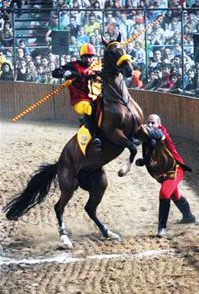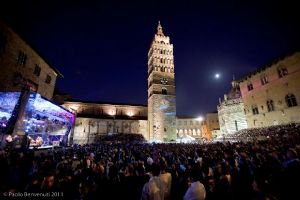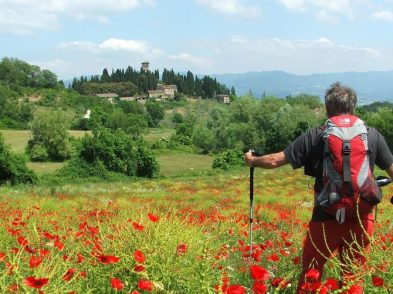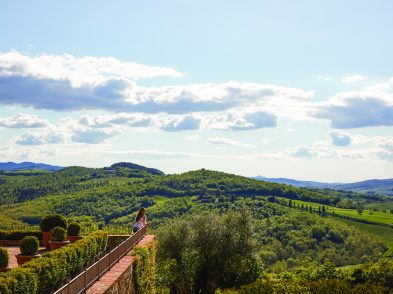Cantar Maggio is a tradition that almost certainly dates back to Etruscan and Celtic rites of spring. Anticipating fertility and a good harvest, it was celebrated by farmers and mountain residents all over Italy for centuries. Yet when it was banned during the years of Fascism, this tradition was at risk for being permanently lost.
However, in the 1970s, Tuscan sociologist Sergio Gargini became interested in the ancient traditions of the Pistoia mountains. He began interviewing elderly residents, recording their folktales and collecting memories and songs that had been passed down through oral tradition. On March 8, 1973, he established the Collettivo Folcloristico Montano, a group of musicians and singers who worked to revive folklore. Local folk musicians Maurizio Gerri and Riccardo Tesi became involved in the project, carrying on the ethnographic studies started by Gargini and reviving traditional songs.
The Collettivo was fundamental in restarting Il Maggio in the 1980s. According to tradition, on April 30 and May 1, groups of singers accompanied by various musicians make their way through the streets of the mountain villages, stopping at various points to wish villagers health and prosperity with canti di maggio, folk songs welcoming the arrival of spring. In return, listeners offer glasses of wine, ham and eggs to i maggiaioli. The groups sing, dance and hand out flowers. Those who do not offer refreshment will have canti di scherno (songs of scorn) sung to them in mockery.
The popularity of the event caused the Collettivo Folcloristo Montano to initiate the Festival del Maggio Itinerante, an extension of Il Maggio, in 2003. This takes place throughout May, as musicians and singers wander the streets of Popiglio, Piteccio, Campo Tizzoro, Bardalone, Maresca and Montagnana. Geri says, ‘In the past each village had its own group of musicians. Nowadays things have globalised. In my opinion, it is positive that the event is changing and taking on new forms. Tradition is kept alive when it transforms.’
The Colletivo currently has 13 official members, including two concertina players, two accordionists, three percussionists, a violinist, bass tuba player, trumpet player and three singers. Bass tuba player Gianluca ‘Turibio’ Barone explains that the group is very flexible: once you become a member, you remain a member for life, even if you don’t always participate.
People of all ages participate in the celebrations, and there is a sense of freedom and unity. Improvisation and a spontaneous overflow of feeling are both essential to the occasion. Cantar Maggio is certainly not a show or a tourist attraction, although the festivities are open to everyone. Those playing guitars, violins, accordions and traditional percussion instruments are all welcome, and anyone can join in singing and dancing. Check the Collettivo’s website at www.collettivo.org for a full calendar of events and to download song lyrics.
Festivities begin at 3pm on April 30 at Popiglio. The fist tappa (stop) is in Popiglio but you can join in along the way, or wait at the final tappa, where celebrations usually continue well into the night.







